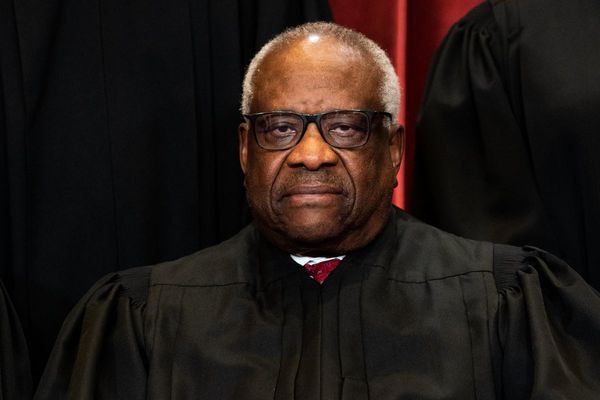
After 55 years at The Age, Michael Leunig filed his final cartoon for the newspaper last week after he was fired by Nine in what he described as “a throat-cutting exercise”. The popular cartoonist has been declared an Australian Living Treasure, but has also drawn ire over the decades for various controversies including his critique of working mothers who use childcare and taking an anti-vaccination stance.
So should we mourn the axing of Michael Leunig? In today’s Friday Fight, The Saturday Paper’s arts editor Alison Croggon argues in the negative, and the former editor of The Age Michael Smith argues in the affirmative.
The firing of Michael Leunig by The Age is the blow that ends an unparalleled era of world-class cartooning at the paper.
Leunig was one of the Magnificent Seven — a stable of cartoonists who adorned The Age simultaneously in the 1980s and 1990s. The others were the devilish Ron Tandberg, the master draughtsman John Spooner, the incomparable Bruce Petty, the brutal Peter Nicholson, the whimsical Arthur Horner and the social justice warrior Les Tanner. All geniuses. They were the greatest group of cartoonists ever assembled in a daily newspaper anywhere in the world.
I came to realise this when I was a visiting journalism fellow, along with 20 or so other internationals and Americans, at Stanford University in 1986. At the end of the first semester, we were each asked to give a presentation on a distinctive feature of our paper/magazine/television/radio station.
I showed my colleagues the work of the Magnificent Seven. They could not believe that one little paper Down Under could house so many cartoonists, and they raved about their work. Curiously, the cartoonist they lauded least was Tandberg, who was probably the most popular Age cartoonist, providing the most belly laughs for readers. The Americans just didn’t get him.
I learned that many newspapers with bigger circulations than The Age had only a single cartoonist, and many others had none, relying on syndicated cartoons. The Magnificent Seven was one of the reasons The Age, at the time, was repeatedly named as one of the best 20 newspapers in the world by Columbia University in New York.
So yes, we should mourn the loss of Leunig as a symbol of the end of a great era in Australian cartooning.
When I was in the editor’s chair, I never ”edited” Leunig. I just put him in the paper. His work was a soft and comforting relief from most of the day’s news. I cannot remember censoring a single Leunig cartoon and nor would I have censored any of the cartoons that upset his recent editors.
Admittedly, they were mostly the days of Mr Curly, forlorn ducks and gentle social commentary. It was before Leunig sharpened his political focus, particularly against wokeness and noisy interest groups. Leunig’s colleague Tandberg believed he failed if he did not offend someone. Just quietly, so did some of us editors.
Michael once said: “At the heart of any good cartoonist’s work there is an essential mischief and a delight in socially inappropriate expression — a risky flirtation with moral danger, bad taste and cheerful obscenity — and this impulse is often the vital fertilising agent in the conception of what can end up as a wonderful joke.” It was ever thus for Leunig. The difference these days is that too many editors want to put that stuff on the spike.
Cartoonists were an important part of the internal culture and soul of the paper. In the days when most of the 300 or so editorial people worked alongside each other in the newsroom, the final hours before deadline were often a fireworks display of creativity — a great piece of writing would land on the desk, a magnificent picture, a brilliant headline, a breaking story, a spirited debate about the Oxford comma. Discussions with cartoonists would help editors get to the kernel of an issue.
Nicholson would sweat for hours to get his work right, using every minute of his approaching deadline. Tandberg would pace the newsdesk at night looking for fresh stories headed for page one, then draw a cracker on the spot in a few seconds. Editors fretted about balance and fairness, not to mention defamation. Cartoonists were allowed to be outrageous; they had a licence to mock, a permit for mischief.
The melancholy Leunig would stay away from those deadline pressures. Few of his cartoons depended on the news of the day. He would wander into the office in the calmness of the next morning and do some contemplation. They were different times. The times of the rivers of gold, before the disastrous attempted privatisation by Warwick Fairfax, before receivership, recession and the invasion of the internet.
My favourite Leunig cartoon depicted a man and his son in a caravan watching a live telecast of the sunset while the real thing was happening outside their window. It spoke to a regular Leunig theme: the need to appreciate the simple, natural things instead of the distractions and perils of modern life.
Leunig was not everyone’s cup of kombucha. Many found him bewildering, including the editors of our sister paper, The Sydney Morning Herald, who took years to acquire the taste and publish him. Millions more stuck Leunig cartoons on their fridge.
The loss of the last of the Magnificent Seven is another bookmark in the decline of newspapers. They were there…
DING DING DING. MICHAEL SMITH HAS GONE OVER HIS ALLOCATED WORD COUNT.
… in the golden age. The decline of newspapers has run in parallel with the decline in the number of cartoonists employed by the papers. It is a global problem — in the US, the Association for American Editorial Cartoonists estimated fewer than 30 cartoonists held newspaper positions by 2021.
The great era of Australian political cartooning began in Sydney in the 1960s when The Bulletin hired Les Tanner and Bruce Petty. Bill Leak emerged at The Australian. Then the centre of gravity moved to Melbourne with the migration of Tanner and the appearance of Leuning, Tandberg, Nicholson and Spooner. Petty joined in, then Horner, of Colonel Pewter fame, returned from England.
The Age still has a group of journalistic heroes, but the bench is thin and the leadership stumbled when it caused Leunig to react so bitterly — feeling he had been betrayed by the way his departure was announced.
Read the opposing argument by Alison Croggon.







